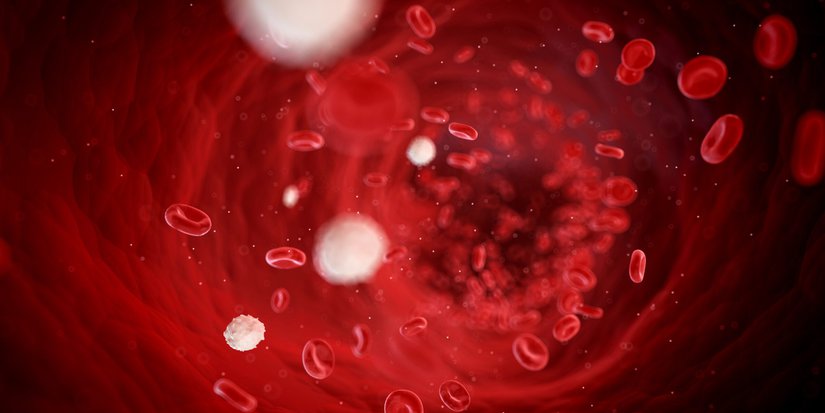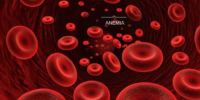Exploring Rare Blood Disorders: What You Need To Know

Rare blood disorders are a group of conditions that affect a small percentage of the population. These disorders are often inherited and can cause a wide range of symptoms, ranging from mild to life-threatening. Due to their rarity, these conditions can be challenging to diagnose and treat. However, advances in research and clinical trials have led to promising new treatments and a greater understanding of these disorders.
In this article, we will explore the different types of rare blood disorders, their symptoms, and how they are diagnosed. We will also discuss the genetic factors and heredity involved in these conditions, as well as the latest treatment options and coping strategies for patients and families. Additionally, we will highlight support resources and advocacy efforts that are available for those affected by these disorders, as well as the hope that research and clinical trials offer for the future.
Key Takeaways
- Rare blood disorders can cause a wide range of symptoms and can be challenging to diagnose and treat due to their rarity and complexity.
- Genetic factors and heredity play a significant role in the development of many blood disorders, and understanding the genetic basis can help healthcare providers make informed decisions about testing, treatment, and genetic counseling.
- Treatment options have advanced significantly in recent years, and advancements in research and clinical trials offer hope for the future of individuals affected by rare blood disorders.
- Advocacy and awareness are important for raising awareness, improving support, easing the burden of living with a rare condition, and improving access to care and quality of life.
Types of Rare Blood Disorders
Various types of rare blood disorders, characterized by abnormalities in the production and function of blood cells, pose significant challenges to healthcare providers and researchers alike. These disorders include but are not limited to sickle cell anemia, thalassemia, hemophilia, and aplastic anemia.
Sickle cell anemia is a genetic disorder that causes red blood cells to become abnormally shaped, leading to a reduced ability to carry oxygen and a higher risk of complications such as stroke and organ damage.
Thalassemia is another genetic disorder that affects the production of hemoglobin, a protein in red blood cells that carries oxygen. It can range from mild to severe and can cause anemia, fatigue, and organ damage.
Hemophilia is a rare bleeding disorder caused by a deficiency in clotting factors, which can lead to excessive bleeding and bruising even from minor injuries.
Aplastic anemia is a rare disorder in which the bone marrow fails to produce enough blood cells, leading to anemia, infections, and bleeding.
Other rare blood disorders include paroxysmal nocturnal hemoglobinuria, myelodysplastic syndromes, and polycythemia vera. These disorders can have serious consequences if not managed properly, and treatment options may be limited due to their rarity and complexity.
Symptoms and Diagnosis
Symptoms of rare blood disorders can vary widely and may not be immediately recognized, making accurate diagnosis a critical step in effective treatment. Some common symptoms of rare blood disorders include fatigue, weakness, paleness, shortness of breath, and bruising or bleeding easily. However, these symptoms can also be indicative of other medical conditions, which is why it is important to consult with a healthcare professional for an accurate diagnosis.
In addition to a physical exam and medical history, a variety of tests may be used to diagnose rare blood disorders. These tests may include blood tests to measure the levels of different blood components, bone marrow biopsies to examine the bone marrow cells, genetic testing to identify any inherited disorders, and imaging tests to identify any structural abnormalities in the blood vessels or organs.
An accurate diagnosis is crucial in determining the appropriate treatment plan for rare blood disorders, which may include medication, blood transfusions, bone marrow transplants, or other specialized therapies.
Genetic Factors and Heredity
Genetic factors and heredity play a significant role in the development of many blood disorders, and understanding these factors can aid in accurate diagnosis and treatment.
Inherited blood disorders are caused by genetic mutations that are passed down from parents to their children. These mutations can affect the production, function, and lifespan of red blood cells, white blood cells, and platelets, leading to a wide range of symptoms and health complications.
There are three main ways in which genetic factors and heredity contribute to the development of blood disorders. First, some mutations affect the structure or function of proteins that are involved in blood cell formation or function. For example, sickle cell anemia is caused by a mutation in the gene that codes for hemoglobin, the protein that carries oxygen in red blood cells.
Second, some mutations affect the regulation of gene expression, which can lead to abnormal levels of certain blood cell types or proteins.
Third, some mutations can increase the risk of developing blood disorders by making individuals more susceptible to environmental factors or infections that can trigger the onset of symptoms.
Understanding the genetic basis of blood disorders can help healthcare providers make informed decisions about diagnostic testing, treatment options, and genetic counseling for affected individuals and their families.
Treatment Options and Advances
Treatment options for blood disorders have advanced significantly in recent years, providing improved outcomes for affected individuals. With the advent of genetic testing and personalized medicine, treatment options can now be tailored to an individual’s genetic makeup, resulting in more effective and targeted therapies.
For example, in the case of sickle cell disease, a genetic disorder affecting the production of hemoglobin in red blood cells, recent advances in gene therapy have shown promising results in clinical trials. Gene therapy involves modifying a patient’s own cells to produce healthy hemoglobin, potentially providing a cure for this debilitating disease.
In addition to gene therapy, other treatments for blood disorders include blood transfusions, bone marrow transplants, and medication. Blood transfusions are often used to replace lost blood cells or to provide additional healthy cells to help fight off infections. Bone marrow transplants, also known as stem cell transplants, involve replacing a patient’s diseased bone marrow with healthy bone marrow from a donor. This procedure can be risky, but can also provide a cure for certain types of blood disorders.
Medications, such as hydroxyurea for sickle cell disease or factor replacement therapy for hemophilia, can also help manage symptoms and prevent complications. As research continues to explore new treatment options, the future looks promising for individuals affected by rare blood disorders.
Coping with Emotional and Financial Impacts
Coping with the emotional and financial impacts of a blood disorder can be a significant challenge for individuals and their families, as they navigate a complex healthcare system and face the uncertainty of managing a chronic condition.
Patients may experience a range of emotions, including anxiety, depression, and frustration, as they come to terms with their diagnosis and adjust to their new reality. These emotions can be further compounded by the physical symptoms of the disorder, including fatigue, pain, and difficulty participating in everyday activities.
In addition to the emotional toll, blood disorders can also have significant financial implications. Treatment for these conditions can be costly, and individuals may face high out-of-pocket expenses, particularly if they have limited insurance coverage.
Furthermore, managing a blood disorder may require individuals to take time off from work or reduce their work hours, leading to a loss of income. As a result, it is important for patients and their families to be informed about available resources, such as financial assistance programs and support groups, that can help them cope with the financial and emotional impacts of their condition.
Support and Resources for Patients and Families
Accessing support and resources can be crucial for individuals and families affected by blood disorders, as they navigate the complex healthcare system and cope with the emotional and financial impacts of managing a chronic condition.
Fortunately, there are numerous organizations and resources available to assist patients and their loved ones.
One such resource is the National Organization for Rare Disorders (NORD), which provides information and support for patients and families affected by rare diseases, including rare blood disorders. The organization offers a patient assistance program, which provides financial assistance to eligible patients for medication, insurance premiums, and other healthcare costs.
Additionally, NORD hosts support groups and educational events to connect patients and families with others who are going through similar experiences.
Other resources for individuals and families affected by blood disorders include the American Society of Hematology, the Hemophilia Federation of America, and the Platelet Disorder Support Association.
Advocacy and Awareness Efforts
Moving on from the previous subtopic, which discussed the resources available to patients and their families, we will now delve into the advocacy and awareness efforts surrounding rare blood disorders. It is important to note that these efforts are vital in ensuring that patients receive proper diagnosis, treatment, and support.
Advocacy groups, such as the National Organization for Rare Disorders (NORD), work tirelessly to raise awareness about rare blood disorders and advocate for the needs of patients and their families. They strive to promote research, increase funding, and improve access to treatment options. Additionally, they provide educational resources and support networks for patients and their families, helping to ease the burden of living with a rare condition.
These efforts not only benefit patients, but also help to educate healthcare providers and the general public about the challenges faced by those living with rare blood disorders. By increasing awareness and understanding, advocacy groups hope to reduce stigma, improve access to care, and ultimately improve the quality of life for those affected by these conditions.
Hope for the Future: Research and Clinical Trials
Research and clinical trials offer potential for advancements in the treatment and management of rare blood disorders. These efforts aim to improve understanding of the underlying causes of these conditions, as well as develop new therapies that can better target the specific mechanisms involved.
For instance, researchers are exploring gene therapy approaches that can correct genetic mutations that cause rare blood disorders, such as sickle cell anemia. Clinical trials are also investigating new drug therapies that can help manage the symptoms of these conditions, reduce the frequency and severity of complications, and improve quality of life for patients.
Moreover, there is growing interest in the use of stem cell transplantation as a potential cure for some rare blood disorders. This approach involves replacing a patient’s diseased bone marrow with healthy stem cells from a donor. While this treatment can be risky and challenging, it has shown promise in treating some rare blood disorders, such as thalassemia.
As research and clinical trials continue to advance, there is hope that new and more effective treatments will emerge that can transform the lives of patients with rare blood disorders.
Conclusion
In conclusion, rare blood disorders can be challenging to diagnose and treat due to their complexity and rarity. However, advancements in medical technology and research have led to improved diagnosis, treatment options, and outcomes for patients and their families.
It is essential to understand the different types of rare blood disorders, their symptoms, and genetic factors to ensure proper diagnosis and treatment.
In addition, emotional and financial impacts can be significant for patients and their families. Support and resources, including advocacy and awareness efforts, can help patients and their loved ones cope with the challenges associated with rare blood disorders.
While there is still much to learn about these disorders, hope for the future lies in ongoing research and clinical trials that aim to improve outcomes and ultimately lead to a cure.







